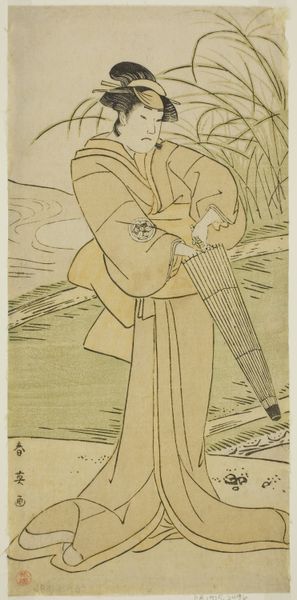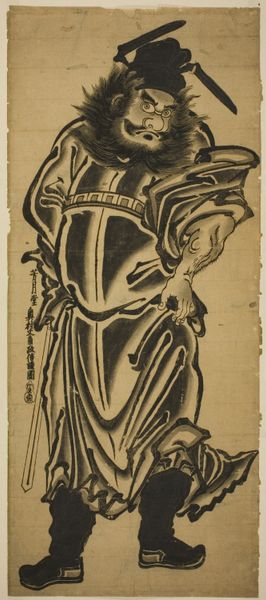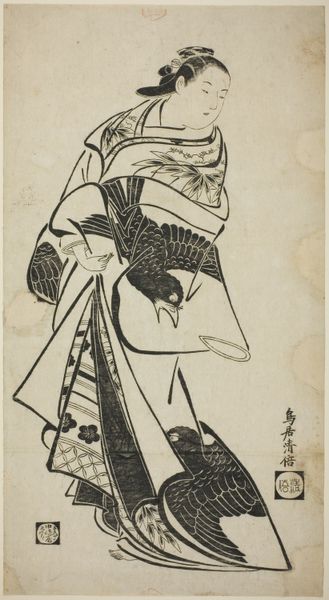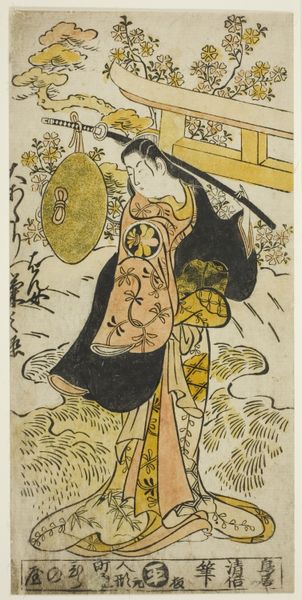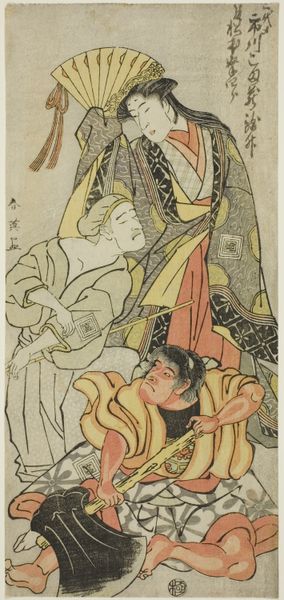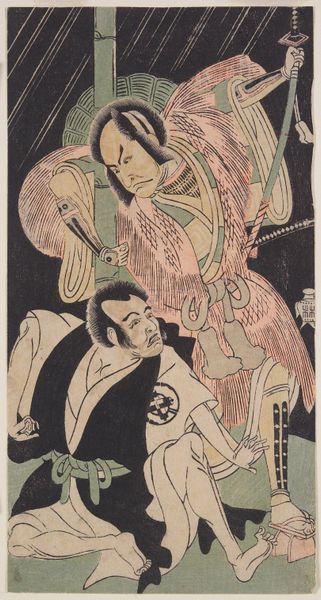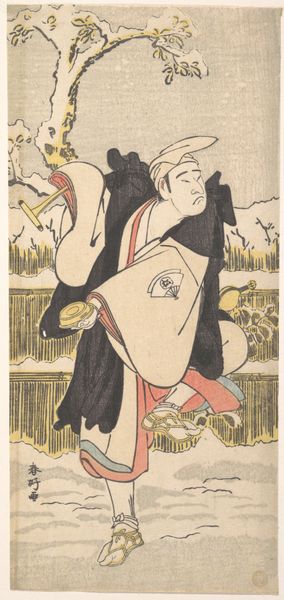
print, paper, ink, woodblock-print
#
portrait
# print
#
asian-art
#
caricature
#
ukiyo-e
#
japan
#
figuration
#
paper
#
ink
#
woodblock-print
#
line
Dimensions: 27 5/8 × 9 13/16 in. (70.2 × 24.9 cm) (image, sheet, kakemono-e)
Copyright: Public Domain
Utagawa Hiroshige’s Shōki is a woodblock print made in 19th century Japan, showing the demon-quelling hero of Chinese folklore, sword in hand. Shōki prints like this were often produced for the Boys’ Day festival, which celebrated the health and future success of young boys. Shōki’s fearsome image was thought to ward off evil spirits and disease, and could be displayed in the home as a protective talisman. The popularity of Shōki prints also speaks to the social and economic context of Japan at this time. The Tokugawa shogunate, in power since the early 17th century, maintained a strict social hierarchy and isolationist foreign policy. However, by the 19th century, this system was beginning to crack under the pressure of internal economic problems and external demands from Western powers to open up trade. In this climate of uncertainty and change, people turned to folk beliefs and traditions for comfort and protection. Historians can explore these complex meanings by looking at other popular prints of the time, festival ephemera, and government records.
Comments
No comments
Be the first to comment and join the conversation on the ultimate creative platform.



